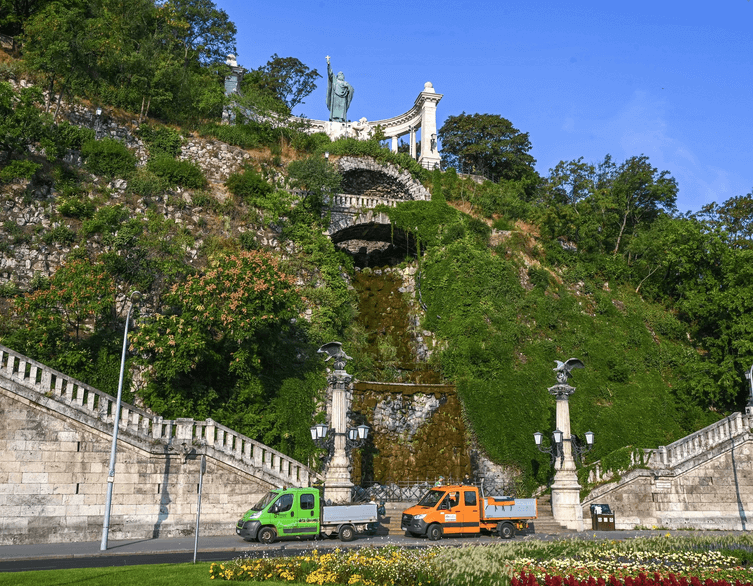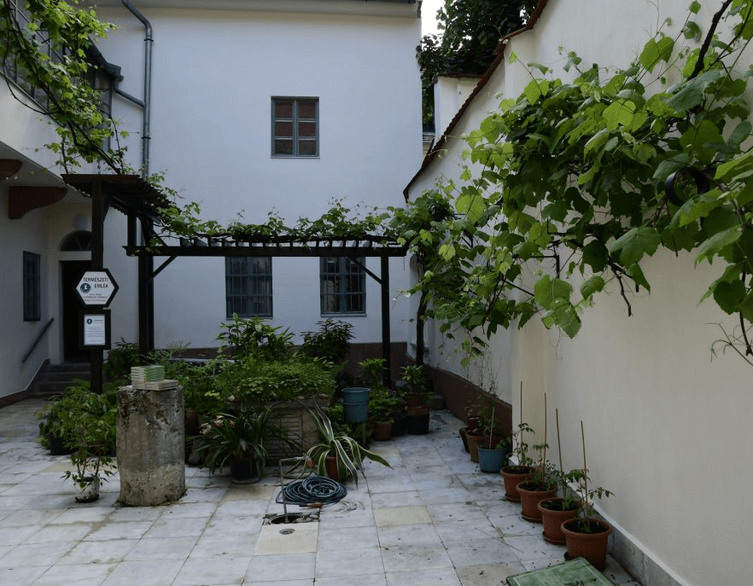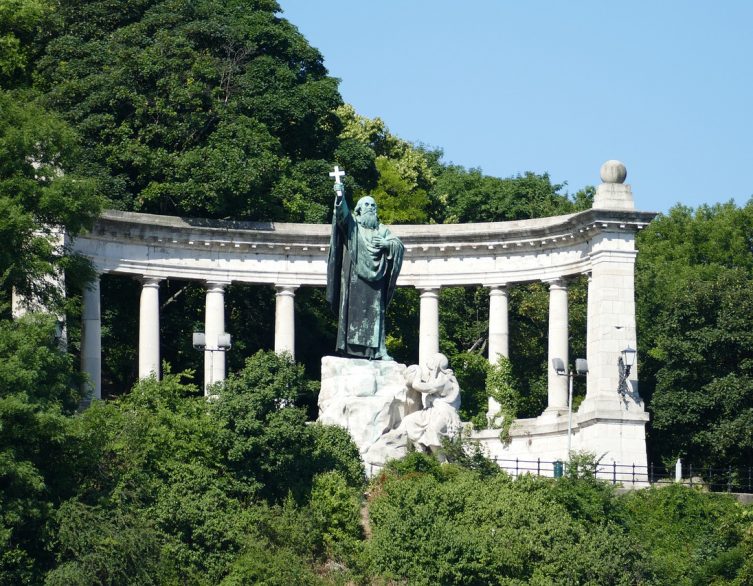Budapest’s Quirkiest Fall Cleaning: Why Dead Trees and Waterfalls Need Some TLC Too

When you think of Budapest’s autumn cleaning rituals, you probably imagine locals sweeping leaves from their doorsteps or maybe the city crews tidying up the famous thermal baths. But what if I told you that this magnificent city has some of the most unusual cleaning habits you’ve ever heard of? From giving waterfalls a proper scrub-down to building hotels for bugs out of dead branches, Budapest’s approach to fall maintenance is anything but ordinary.
The Waterfall That Gets a Spa Day
Picture this: you’re strolling up Gellért Hill, admiring the stunning views of the Danube, when you spot maintenance workers rappelling down a waterfall like they’re in some kind of urban adventure movie. No, you’re not hallucinating – Budapest actually gives its waterfalls regular deep cleans!
The Gellért Hill waterfall, that picture-perfect cascade that’s graced countless Instagram feeds, gets the full treatment twice a year. During the recent autumn cleaning session, workers discovered quite the collection at the top: random clothing items (seriously, how does a sock end up in a waterfall?), various bits of trash, and fallen branches that had turned the scenic spot into nature’s lost-and-found box.
But the spring cleaning is where things get really serious. The city brings in professional climbers – actual alpinists – who scale down the waterfall face to remove not just litter, but invasive plant shoots that could damage the waterfall’s machinery. These uninvited green guests might look harmless, but they’re basically the botanical equivalent of that friend who overstays their welcome and starts rearranging your furniture.
The waterfall has been charming visitors since the early 1900s, when Budapest went through a major garden-building craze. Between 1901 and 1905, the city transformed areas around Gellért Hill, planted trees near the Chain Bridge, beautified the route up to Buda Castle, and added greenery to Kossuth Lajos Square and József Nádor Square. This waterfall was part of that grand vision – and keeping it pristine means it continues to be the backdrop for romantic proposals and tourist selfies alike.
The Insect Hotel Revolution in Népliget
Now, if cleaning waterfalls sounds unusual, wait until you hear about Budapest’s latest accommodation boom – luxury hotels for insects. No, this isn’t some bizarre startup idea; it’s the brilliant brainchild of the city’s park maintenance team in Népliget.
Instead of hauling away all the branches and twigs from their regular tree pruning and shrub trimming, the maintenance crew decided to get creative. They stacked these organic leftovers in neat rows along Vajda Péter Street, creating what’s essentially a massive, natural bug hotel. It looks like an artistic wooden fence, but it’s actually a bustling metropolis for Budapest’s smaller residents.
This “dead wood hedge” has become prime real estate for bees, spiders, ants, and countless other beneficial insects. It’s like creating a nature documentary right in the middle of the city. The decomposing plant material slowly enriches the soil, while birds get an all-you-can-eat buffet of insects. As an added bonus, this organic barrier catches a significant amount of dust from the nearby road – talk about multitasking!
But the residents of this insect hotel aren’t just creepy crawlies. Lichens, mosses, and various fungi have also moved in, turning the hedge into a miniature ecosystem that would make any environmentalist weep with joy.
Where Dead Trees Get a Second Life
Budapest’s relationship with dead trees is surprisingly romantic. Rather than immediately clearing away every fallen trunk, the city has embraced the “standing dead tree” philosophy in several locations around town.
Take Margaret Island, for example, where you can visit what was once the island’s thickest chestnut tree – nearly six meters in diameter. This giant now stands as a monument to natural cycles, and it’s become home to some fascinating tenants. During a recent inspection, arborists discovered golden flower beetle larvae, giant carpenter bees, and blue wood-boring beetles living it up in their wooden high-rise. A wild rose even decided to sprout from the dead trunk, proving that in Budapest, even death can bloom into something beautiful.
Best deals of Budapest
After July’s devastating storms, the city left several freshly fallen trees in the Óbuda Island gallery forest and wetlands to decompose naturally. It’s not laziness – it’s ecological wisdom. The path connecting Normafa and Erzsébet Lookout is lined with countless fallen trees that are slowly returning to the earth, creating a natural museum of forest succession.
Why Dead Wood Is Actually Living Gold
Here’s where things get scientifically fascinating. Dead wood isn’t just tree corpse – it’s one of the forest’s most vital organs. In Budapest’s parks and green spaces, these seemingly lifeless logs and branches are working overtime as:
Nature’s Pantry and Hotel: Dead wood maintains forest productivity by providing organic matter, moisture, nutrients, and micro-habitats. It’s like a 24/7 convenience store and hotel rolled into one for countless species.
The Forest’s Insurance Policy: These wooden remains give shelter to creatures that either feed on dead wood or use tree cavities as homes. They’re also nature’s quality control system, helping forests self-regulate.
Flood Control Heroes: In waterways, accumulated dead wood creates special aquatic environments while slowing water flow during heavy rains, naturally reducing flood risks. Budapest knows a thing or two about Danube floods, so every natural flood barrier helps.
Carbon Storage Champions: Dead trees are long-term carbon warehouses, helping mitigate climate change effects. It’s environmental banking at its finest.
Before trees completely die, they become magnets for specialized species. About 115 species of hoverflies are decomposer-dependent, and many large bird species need massive old trees for nesting. Fresh dead wood attracts fungi and bacteria, which in turn attract various beetle species that create complex tunnel systems in the newly dead wood – it’s like a underground subway system for bugs.
Woodpeckers, those master carpenters of the forest, know exactly where to find the best insect buffets and typically hollow out their nesting cavities in dead wood. These feathered architects are considered keystone species because countless other cavity-dwelling creatures – from other birds to bats – eventually inherit their abandoned homes.
A City That Cleans with Character
Budapest’s unconventional fall cleaning methods reveal something wonderful about this city’s character. Rather than simply disposing of natural “waste,” the city has found ways to turn maintenance into conservation, cleaning into creativity, and urban management into ecosystem building.
So the next time you’re wandering through Budapest’s parks and green spaces this autumn, take a moment to appreciate the dead wood hotels, the freshly scrubbed waterfalls, and the carefully tended chaos that makes this city’s approach to cleanliness so uniquely charming. In a world where cities often fight against nature, Budapest has figured out how to dance with it – even when that means occasionally giving a waterfall a bath or building luxury accommodations for beetles.
Who knew that the secret to keeping a city beautiful was learning to see the life in death, the purpose in decay, and the wisdom in what others might call waste? Leave it to Budapest to turn municipal maintenance into an art form that would make Mother Nature herself smile.
Related news
Related attractions
























